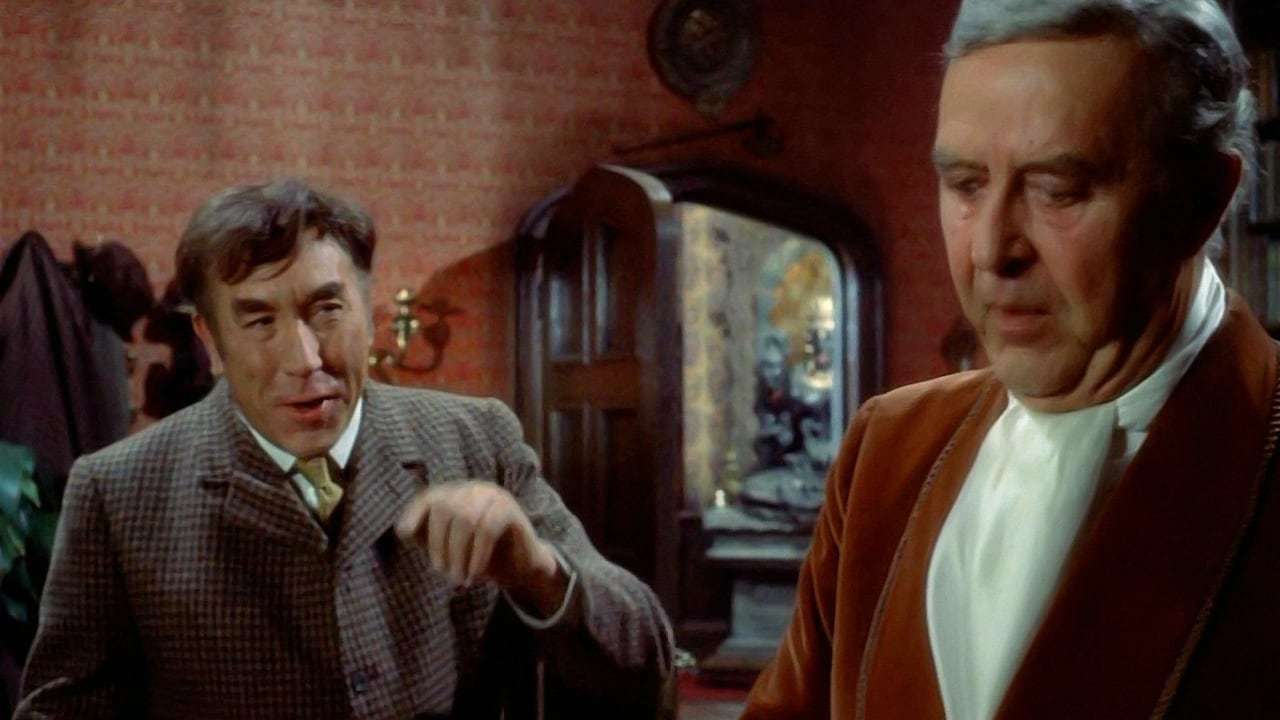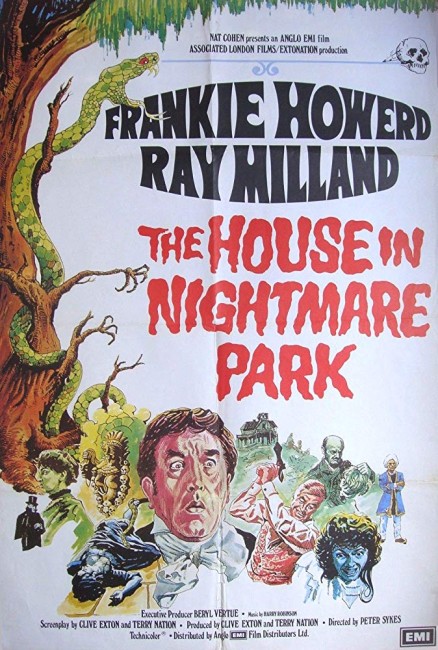Crew
Director – Peter Sykes, Screenplay/Producers – Clive Exton & Terry Nation, Photography – Ian Wilson, Music – Harry Robinson, Makeup – Jill Carpenter, Art Direction – Maurice Carter. Production Company – Associated London Films/Extonation Productions.
Cast
Frankie Howerd (Foster Twelvetrees), Ray Milland (Stewart Henderson), Hugh Burden (Reggie Henderson), Elizabeth MacLennan (Verity Henderson), Kenneth Griffith (Ernest Henderson), John Bennett (Patel), Rosalie Crutchley (Jessica Henderson), Ruth Denning (Agnes Henderson)
Plot
Ham actor Foster Twelvetrees is hired by Stewart Henderson to give a performance at his country estate. Once there however, Twelvetrees becomes involved in murky goings-on involving the murderous hatchet-wielding mother in the attic, snakes in the basement and a conspiracy to hide the fact from the rest of the family that the brother Thomas has died. Twelvetrees then discovers that Thomas is his father and that the rest of the family have lured him here because he has been bequeathed the entire estate. Twelvetrees faces various family members attempting to kill him off and others who believe that he knows the location of Thomas’s fortune in diamonds.
The Old Dark House genre is something that emerged on the American stage in the 1920s and consisted of spooky thrills set in a big dark mansion usually balanced with comedy and with everything supernatural eventually revealed to be mundane in nature. This genre enjoyed considerable success on film in the 1920s and 1930s and gained a more overtly comic lease of life after the Bob Hope remake of The Cat and the Canary (1939). The genre died away at the end of the 1940s. (For a more detailed overview of the genre see Old Dark House Thrillers).
During the British horror revival of the 1950s and 60s, there were several comedic attempts to revive the Old Dark House genre with the likes of the remake of The Old Dark House (1963), The Horror of It All (1964) and The House in Nightmare Park, with only a couple of serious attempts, The Haunted House of Horror (1969) and the creaky remake of The Cat and the Canary (1978). None of these succeeded in making any ripples and only ended up emphasizing how dated the genre was up against its contemporaries.

The House in Nightmare Park makes the crucial mistake of casting Frankie Howerd, a popular comedy star from music hall, various tv series and several of the Carry On films. Howerd goes through his elastic face reactions and an excruciating series of Benny Hill type gags – unbuttoning the tops of fainting women, innuendos about the ‘lovely bunnies’ being held up by a woman. However, the Old Dark House comedy/thriller is not a form that delights in spontaneous comedy, rather one that is driven by cliche plot devices and Frankie Howerd’s comedy seems out of place amidst this.
For that matter, The House in Nightmare Park is not even an Old Dark House film, it is more of an Agatha Christie whodunnit concerning various sinister squabblings over an inheritance. Certainly, its being made in and around the Anglo-horror film has had it labelled as a horror film. The plot is entirely routine. Peter Sykes rarely generates any tension up until the end, where there at least a couple of passably sustained sequences with Frankie Howerd venturing into a pit of snakes and Ray Milland chasing him around the house with an axe.
It was directed by Peter Sykes, a minor Anglo-horror director who made the likes of Venom (1971) and Hammer’s interesting Demons of the Mind (1972) and their last theatrical horror film To the Devil a Daughter (1976). It was written by Terry Nation, best known as the creator of Doctor Who (1963-89, 2005– )’s The Daleks and of genre tv series such as Survivors (1975-7) and Blake’s 7 (1978-81), as well as co-writer of a much superior, more serious horror film And Soon the Darkness (1970), and Clive Exton, screenwriter of the likes of Entertaining Mr Sloane (1969), 10 Rillington Place (1971), Doomwatch (1972) and many episodes of the later Poirot tv series. At the service of Frankie Howerd’s lame routines, there is the sense that all three are working well beneath their level of talent.

